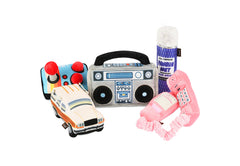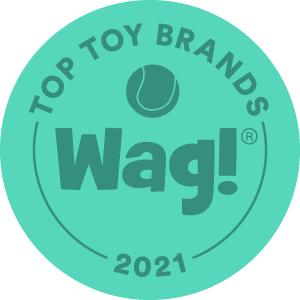Cats and dogs are the most commonly kept pets in the world. It’s essential they lead as healthy lives as they can.
Good nutrition and understanding of your pets’ dietary needs will go a long way in ensuring they avoid health problems related to unsuitable diets.
Dietary Requirements of Cats and Dogs
There are large differences between dietary requirements of cats and dogs. Domesticated dogs search for animal and vegetable products in their diets and are considered omnivorous.
On the other hand, a cat's diet should be based solely on meat products, since a healthy diet adapted to their needs requires essential nutrients that are only present in negligible amounts in plant-based foods.
What Can Cats and Dogs Eat?
Cats are considered obligate carnivores, which means that in order to stay healthy they need a supply of animal-based proteins in their diets.
Protein
In order to lead a healthy life, a cat needs to have approximately one-third of their entire diet comprised out of proteins.
Protein is metabolically broken down into amino acids, and some organisms are able to synthesize some of these amino acids themselves.
They are called non-essential amino acids. There are some types of amino acids that need to be ingested from food, as they can’t be produced naturally in the body.
One of these essential amino acids for cats is Taurine, as cats need to have a steady supply to stay healthy. Insufficient amounts can lead to blindness, deafness, and even heart failure.
Even though dogs are omnivorous, protein is a heavily relied nutrient in their diets. Without a large enough amount of protein, dogs can also develop health problems.
A dog needs around a gram of protein per pound of its body weight a day. That’s around 18-25 percent of protein in their diets. Puppies need almost 50 percent more protein per day.
Dogs and cats with liver and kidney issues, as well as hyperactive dogs should have their protein intake reduced.
Fat
Fats are necessary for the working and structure of all cells. They serve as energy reserves, and are precursors for the synthesis of numerous molecules such as hormones and vitamins.
Fats and oils are comprised of fatty acids. The essential fatty acids cats and dogs need to ingest are omega-3 and omega-6 fatty acids.
Among these are Linoleic and Arachidonic acids, as well as Docosahexaenoic acid, which are essential for the cats’ health.
Dogs need around 10 percent of their total calories to come from fats, and some healthy sources include chicken and pork fat, as well as fish and cottonseed oil.
Minerals
Minerals are inorganic essential nutrients. Their main function is keeping the organism in an optimal state of health through their various roles.
Minerals include calcium, chromium, chloride, cobalt, copper, iodine, iron, fluorine, magnesium, manganese, molybdenum, phosphorous, potassium, selenium, silicon, sodium, sulfur, and zinc.
Calcium deficiency is especially alarming for kittens, and their elder feline friends, as it can cause bone deformities. This is a problem for puppies and dogs, too. Low calcium can also cause bone and teeth degradation, as well as a poor quality coat.
Vitamins
Vitamins are organic ingredients found in very small traces in foods essential for health, growth and reproduction of cats and dogs.
Some of the most important vitamins for the proper health of cats are vitamins E, A, C, D, B2, B6, B12 and folic acid.
Vitamin A is necessary for eye, skin and other tissue health. Unlike dogs who can convert beta carotene into vitamin A, cats require a constant source of vitamin A, from sources such as liver.
Vitamin E is the most common supplement given to cats. Its important function is that it aids proper immune system development. Vitamin E is made from a group of related chemical compounds that are fat soluble. The most potent of these is alpha-Tocopherol, which is the most commonly used. They’re also an important factor in dogs’ diets as well.
Cats also need approximately five times more vitamin B2 compared to dogs to stay healthy.
Carbs
Dogs need around 30 to 70 percent of their daily food intake to consist of carbs, as they can use carbs as a source of energy.
Dogs can get their needed carbs from wheat, corn, rice, barley, and oats.
As far as cats are concerned, there are no dietary requirements for carbohydrates in cats.
Water
In order to stay hydrated, both cats and dogs need to drink enough water. In order to prevent dehydration, your pets should always have a source of water nearby.
Types of Cat and Dog Food
Now that we’ve seen the main nutritional need in dog and cat food, let’s look at the types of food available in stores for both cats and dogs.
Types of Cat Food
Commercially, there are three main types of cat food available. These are dry food or kibble, semi-moist food, and wet or canned food.
Dry Food or Kibble
Dry cat food is among the cheapest types of cat food. Out of all kinds of cat food, this type is the most nutritionally unbalanced, and as far as the taste goes, commonly uninviting for cats to eat.
Semi-Moist Food
Semi-moist food is similar in appearance to kibble. The main difference is the chewy texture of the food. As far as food choice goes, this is the most unpopular type. It’s typically treated by a number of additives, and because of that it’s an unhealthy choice. Today this type is rarely seen on the shelves.
Wet Food
This is by far the best type of store-bought food available, tasty for your cat, and nutritionally balanced. Because it’s so tasty cats have a tendency to gorge on it, so be sure to exercise portion control.
Types of Dog Food
There are five main types available to choose from. Before purchasing, you should review your options from the top brands available and choose the best for your dog.
Kibble
The cheapest and most boring option. Even so, some dogs love it. They’re also great for maintaining healthy teeth due to the crunchy texture.
Canned
Canned or wet food is, the same as for cats, one of the most popular options. Dogs find it delicious, but you should look for the digestible protein content. The higher the value, the more sustenance the dog will get from each can.
Semi-Moist
These are the least nutritional types of dog food, and they shouldn't be used as more than an occasional treat.
Home Cooked
A time consuming and more affordable option that if executed properly will give your dog the best and most nutritious meals, provided you’re aware of all their needs.
Raw
A raw diet includes raw meat and uncooked bones and is suited for dogs because of their shorter gastrointestinal tract that quickly digests food. Even so, a period of adjustment is needed before transitioning to fully raw.
Conclusion
Cats and dogs have very different nutritional needs, as well as different options available on the market. To sum it up, cats need cat food to stay healthy and to get the nutrients they can’t get otherwise.
As for dogs, their diet may seem less complicated, but their health is also dependent on a healthy diet. Opt for well rounded, nutritious options and natural ingredients in favor of synthetic supplements.






